AC Milan have been one of the most dominant teams in Serie A this season, also averaging the second most average possession in the league.
Yet, they have been vulnerable in the moments without the ball.
This article focuses on the set play aspect of their defensive performance, where the Rossoneri rank amongst the worst three in terms of xG conceded.
Milan’s red half have conceded the second-fewest corners in the league, facing on average, just over three corners per game.
However, whilst only facing such a small amount of dead balls, they have been extremely vulnerable due to their approach to defending these set plays.
These flaws were apparent during pre-season when both Barcelona and Juventus penetrated Milan’s system, but they stuck firmly to their system throughout this season and seasons past.
In the three most recent fixtures, each of Milan’s opponents, PSG, Udinese, and Lecce, have identically taken advantage of the weaknesses of Milan’s man-marking setup, laying a blueprint for future opponents in how to defeat the Rossoneri from corner kicks.
In this tactical analysis, we will look into the tactics behind AC Milan’s defensive corner setup, with an in-depth analysis of why using man-marking can be punished so easily.
This set-piece analysis will examine how Milan’s setup has in recent weeks been found out, other faults yet to be exploited consistently in their system, and what Milan need to do to stop leaking chances from corner kicks.
AC Milan Man Marking Approach
Pictured below, we can see what AC Milan’s system looks like for the most part unless players attempt to receive a short corner.
Two zonal defenders (red) can be seen positioned inside the six-yard box, whilst five man-markers (white) attempt to engage in 1v1 duels with each respective attacker.
The remaining three players located around the edge of the box (black) are used to deter opposition teams from short passing combinations and pick up any additional late arrivals into the penalty area.
As you can see, there is lots of space available for opposition sides to attack, although, at first sight, it doesn’t seem straightforward, with every attacker marked.

Ways Man-Marking Systems Can Be Broken
In terms of different man-marking structures that we may see inside the box during corner kicks, there are three main groups these can be separated into.
1. Smart movement
The first and most common way we see Milan defend, which gives each defender the best chance of successfully defending, is by marking an attacker tightly before they can make any movement.
For Milan’s approach to work effectively, the aim is for each defender to be able to get in the attacker’s face, not allowing them to attack the goal by blocking their path and being close enough so that if they try to change direction, the defender can match their movement.
However, this is most commonly possible in pure 1v1 situations.
Through smart runs, in 2v2 scenarios or more, tight marking can be exploited.
This forms a mini cluster, which we will explore more deeply later.
A 2v2 scenario can simply be created by two attackers starting next to each other before the corner is taken, like in the example below.
The target attacker has open space all around him apart from one side where his teammate is positioned.
If he attempts to go into an area with space, his marker will be able to stay touch-tight and track the movement; however, as the corner is about to be taken, an attacker can lose their marker by using his teammate as an obstacle for his marker to avoid.
Making a move around your teammate gives the defender a problematic decision as if he is on a road that splits into two, where he must pick one side.
If the marker pictured below turns right and follows his marker, he will be on the wrong side of the attacker (behind him) and allow them to take the shot on goal unopposed.
If he turns left, he will give that attacker a second or two in space, where a well-timed cross will allow him also to attack the ball unopposed.
The only possible solution is for the two defenders to rotate who they are supposed to mark, but the attack still has the yard of separation, which is all he needs to make contact with the ball.
This shows that using a tight man-marking approach, if coming up against a prepared side, is highly likely to be broken through.
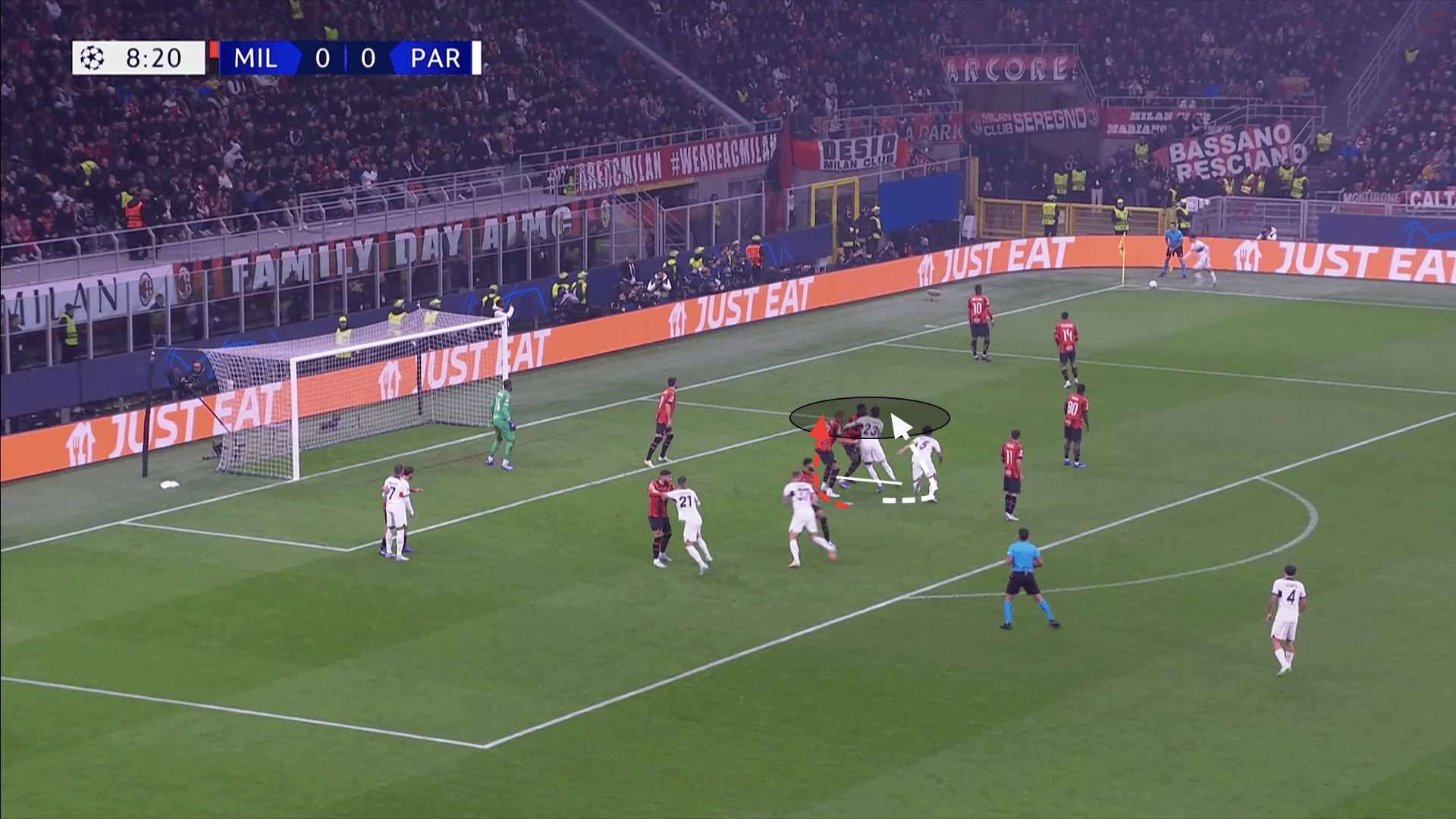
2. Distant
An alternative to tight marking is for the defender to keep some distance from the attacking unit.
A distant approach will prevent the issues of tight marking, where one sudden movement from the attackers will allow them to attack the space unmarked.
However, a distant approach comes with its own vulnerabilities.
Allowing an attacker to sprint toward a static defender is a situation that can only be likened to a deer in headlights.
The defenders are supposed to track the run of the attackers, but if an attacker is running at speed towards the six-yard box, the only way to stop a player with that much momentum would be through a foul.
Furthermore, the average attacker with momentum can jump to a higher level than the average defender who has a static starting position.
Each duel depends on both players’ ability to time their jump, as well as height, jumping reach, and other factors, but we can usually expect the attacker to win in this sort of duel.
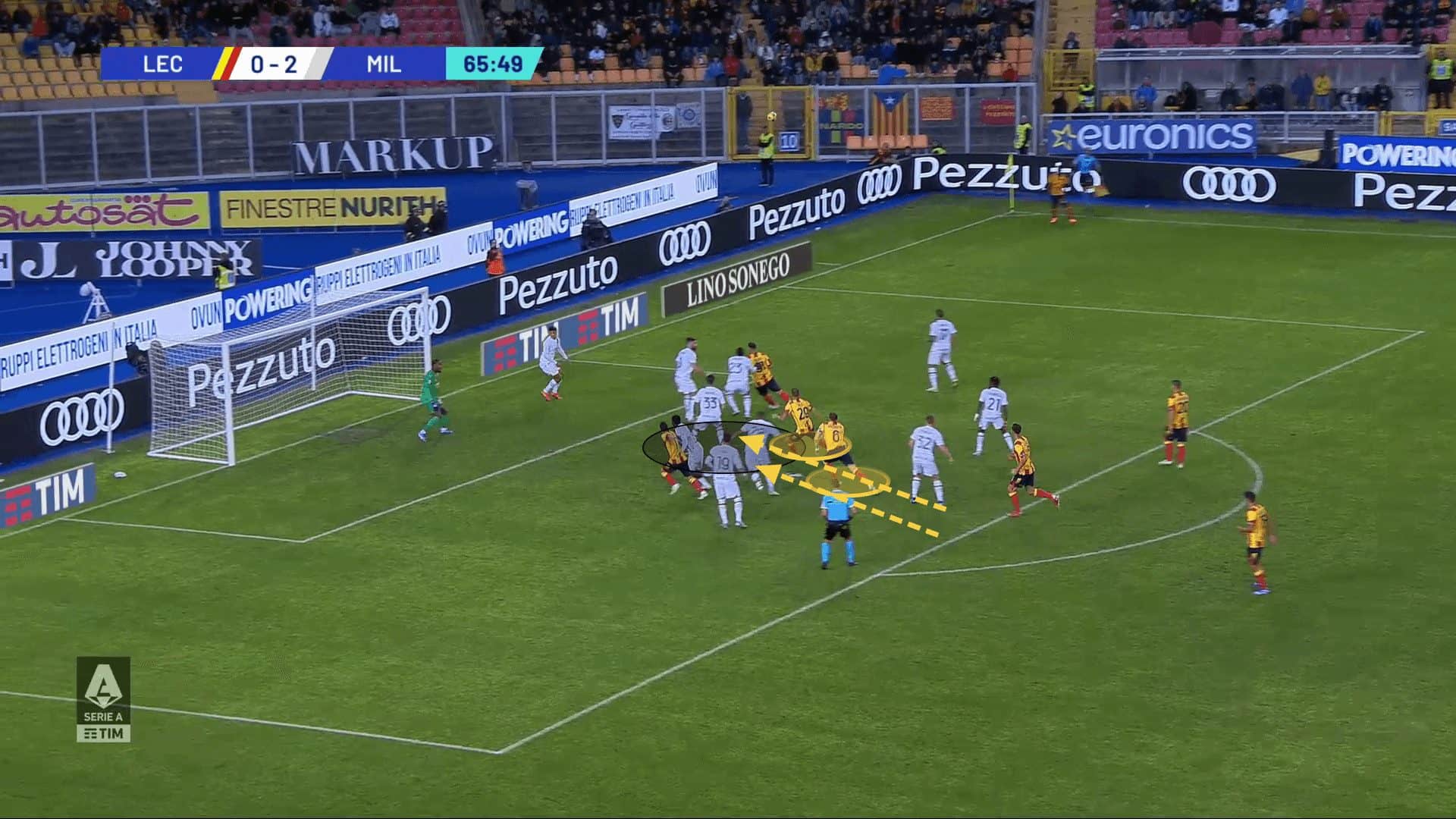
3. Defending in a Cluster
The last way you can defend against a group of attackers, whilst in a man-marking approach, is in a cluster, although the defending side does not dictate if this is possible or not.
AC Milan can only defend like this if the opposition team’s attackers are all in the same rough area.
As stated before, a cluster is made up of many different tight marking 1v1 duels, all converging into the same area where space is extremely limited inside the group of players.
The only way to manoeuvre through the box is by moving around the outside of the cluster.
Earlier, avoiding a mini cluster was likened to a split in the road, but coming up against a proper cluster is like deciding whether to take the next exit off the motorway or drive the extra mile.
The 1v1 duel starts in the bottom left side of the cluster, where the attacker then arcs around and attacks the near edge of the six-yard box.
The defender can choose to directly follow but end up behind the attacker.
Or, the defender can travel the extra mile, hoping an opening in the cluster comes up to intercept the attacker’s run, or the more likely option occurs where he’s lost sight of his target after having to travel such a long way around the other side.
Yet again, defending in a cluster shape can be fatal, like any other man-marking approach.
Milan’s defenders have little chance in any of these scenarios unless they come up against a side that lacks the proper preparation to take advantage of these clear weaknesses.
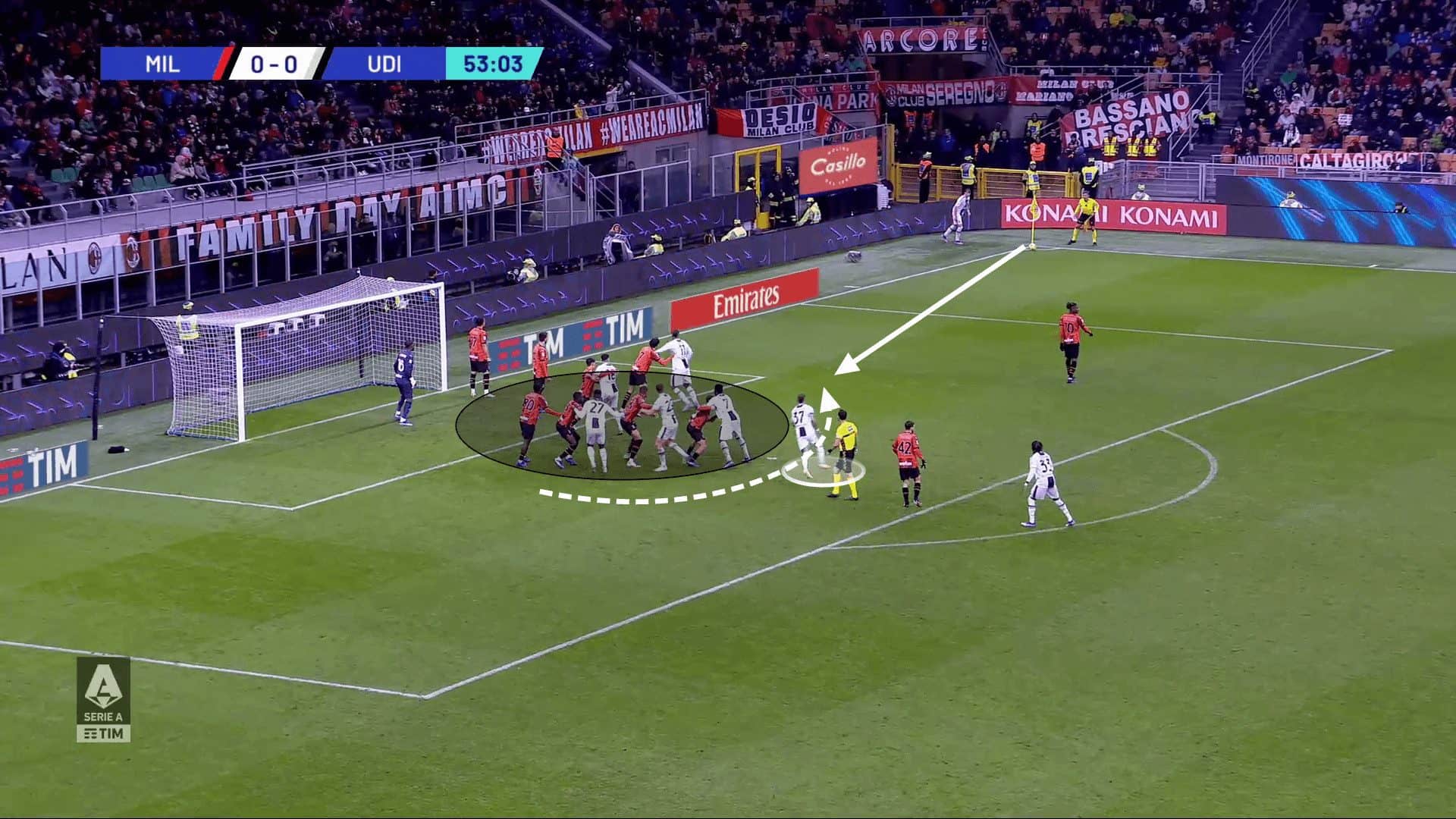
Vulnerable to Manipulation
Another issue of man-marking is the small number of zonal defenders available, which, as a result, leaves clear spaces in both the front and back sides of the six-yard box.
Leaving so much space open means that Milan are vulnerable to their man-markers getting dragged around from one place to another, whilst opposition teams can drag these players around to create space wherever they like.
There are two main ways in which teams have executed this against Milan so far:
1. Start deep to create space high
As shown in prior examples, AC Milan always left the six-yard box’s back half open.
If the goalkeeper can come out and claim the ball, then there is no problem leaving that open.
However, there are instances when the goalkeeper cannot do so, such as when a corner is aimed towards the near side of the six-yard box before being flicked on.
Starting deep guarantees that the space high, near the goal, will be open, and there is no rush to cross the ball into that space directly.
Often, in open play, it’s important to play the pass quickly once space is identified, as defenders are likely to recover their positions.
However, from these set plays, AC Milan voluntarily leave space near the goal open, so there is no need to be too direct, and opposing teams can ensure they get the ball into that area through less direct methods.
The primary way this is done, and what has caused Milan issues in their recent three fixtures, has been through a cross to the near side of the six-yard box.
A cross to this area has several benefits.
Firstly, the goalkeeper cannot claim the cross, which would be possible if the cross went directly to the back post.
Secondly, it is easier to find a player in space at the near side, where the attacker has to time their run into, rather than completely getting past their marker.
The target player at the back post needs to run past their marker, whilst the near side player doesn’t have to do that but only move towards the corner flag.
The hardest part for the target player at the back post is losing their marker and arriving in that space unopposed.
The near-side cross immediately solves this issue.
As soon as the corner is taken, players naturally watch the ball to judge whether it’s coming towards them.
When the man-marker turns to look at the ball, the attacker can move out of sight, into their blind side, and then make that darting run at the back post with no disruption.
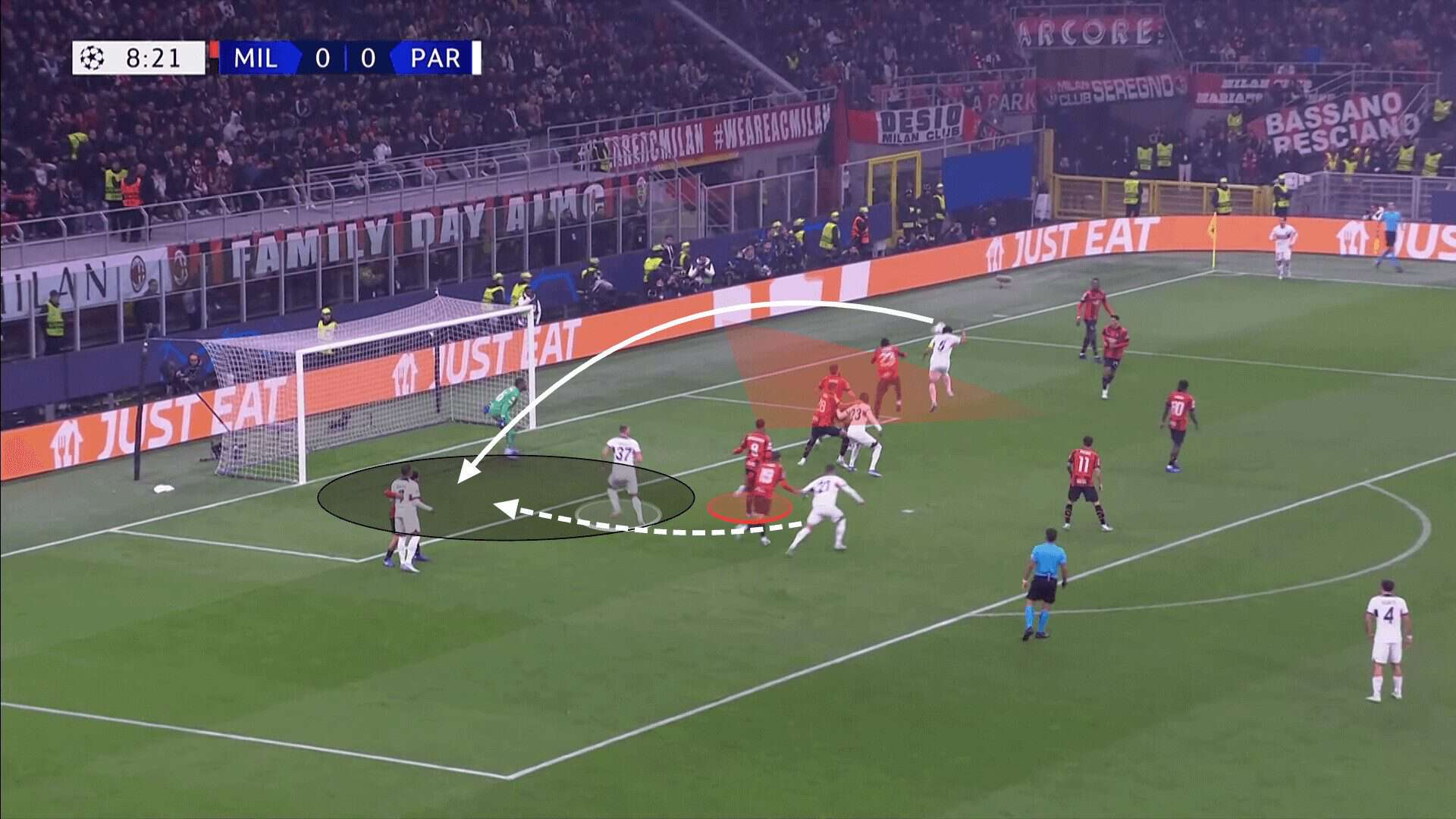
2. Starting high to create space deep
The opposite of the above is also possible against man-marking systems, as the attacking teams have full control and can manipulate the man-markers’ positions to wherever they’d like.
This simply involves the attacking team positioning their players as high as possible, knowing all the defenders will also move there.
Dragging defenders away from the penalty spot then allows an attacker to arrive in space to take a shot on goal from a slightly deeper position.
This variation is a little more difficult to score from, with the attacker not having an open goal to tap the ball into; however, the quality of the chance created can still be high, and it is arguably more likely to result in a shot, with defending teams less likely to track a runner arriving from outside the box at the penalty spot, in comparison to a player coming in the six-yard box from the penalty spot, where there is a chance defender naturally drops deep as a corner is taken.
As seen in the example below, yet again, an attacker simply has to make a move towards the corner taker to make the first contact inside the box, with defenders more interested in protecting the goal.
This gives the attacking side an easy entry into the penalty area, from where the ball is set back towards the penalty spot, for an attacker to arrive from deep and strike the ball.
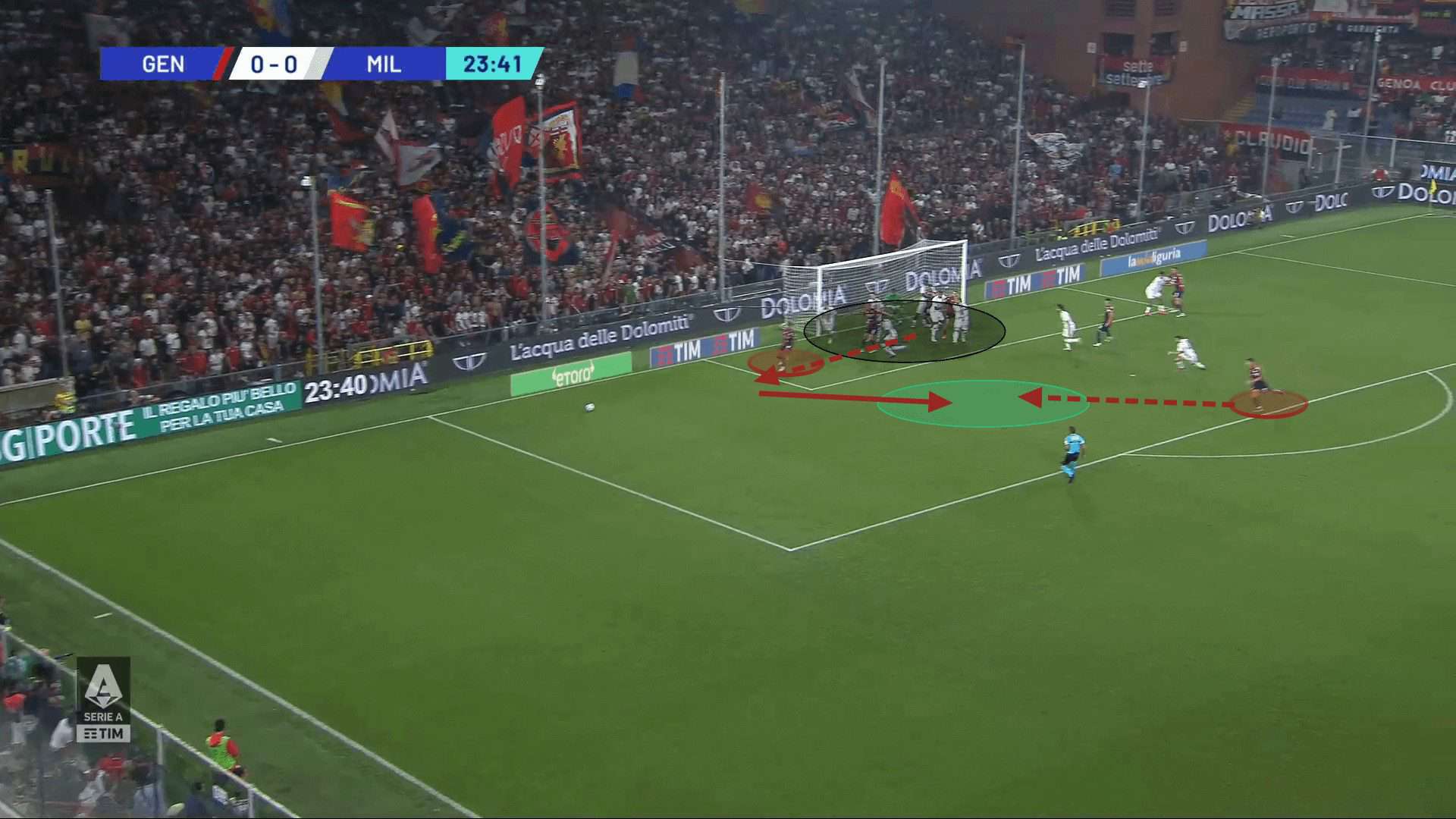
One final thing to note is that with Milan’s system, they have five man-markers who also have extremely important jobs of being competent in aerial duels.
When most teams mix zonal and man-marking, the man-markers are less involved in aerial duels, but their role is designed to disrupt an attacker’s runs so that when the ball enters the box, a zonal defender can attack the ball with more ease.
Zonal defenders are usually the best aerial players at the club, so as long as an attacker doesn’t arrive with speed, the defender should be more likely to win the aerial duel.
However, with AC Milan’s system, any of these five man-markers may have to engage in an aerial duel at any time.
This leads to potential mismatches in terms of aerial ability between a defender and attacker, especially in instances when the attacking side has a team with many threats aerially, where an attacker can be marked by a much weaker defender.
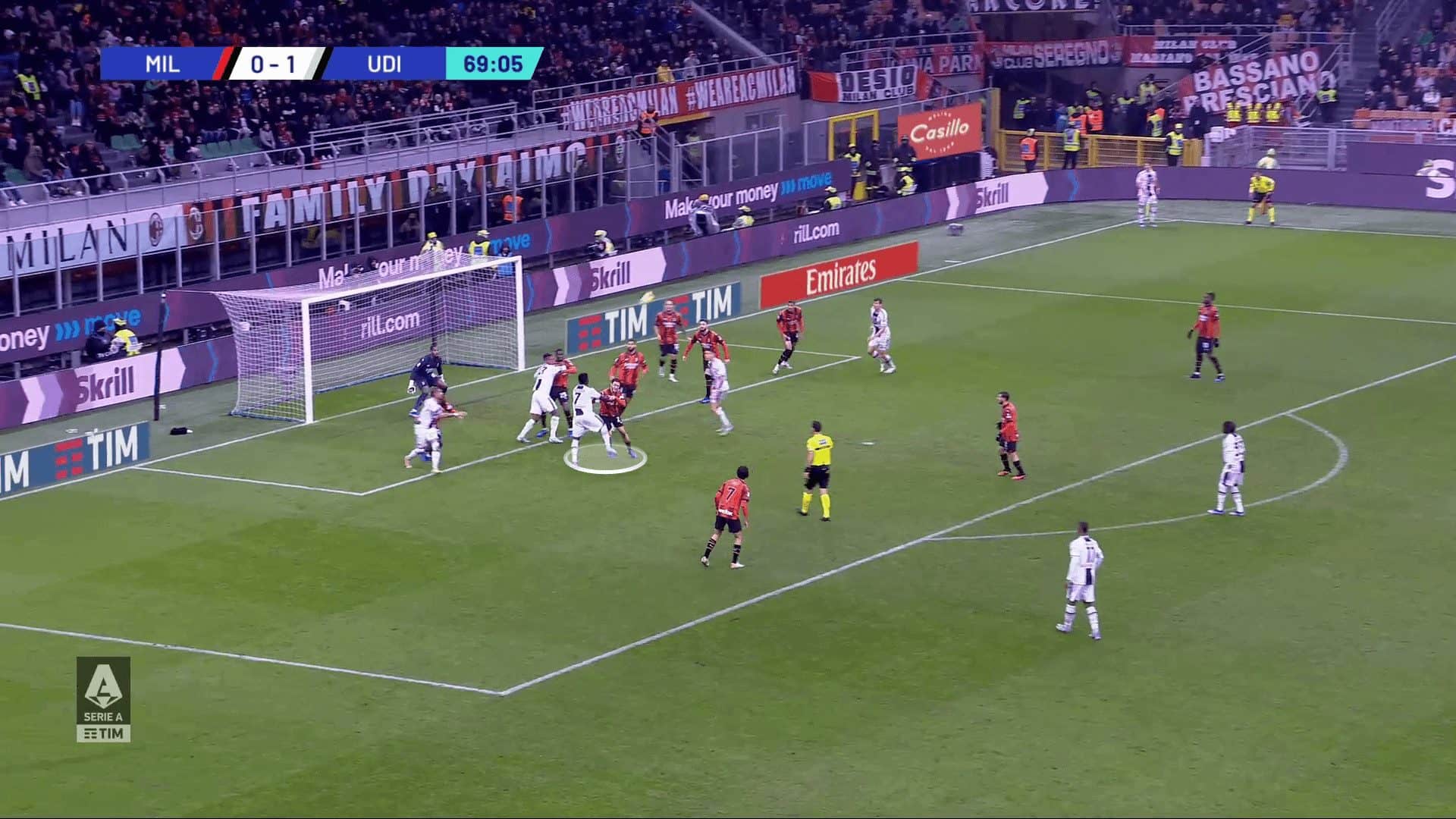
Summary
This set-piece analysis has thoroughly displayed how the opposition side can dismantle man-marking defensive setups like that used by AC Milan.
With the recent trend of teams capitalising on the spaces offered by Milan, there is cause for concern, and it is interesting to see what will happen on the other side of the international break.
The gaps at the back post should be plugged immediately, as teams can manipulate the positions of Milan’s man-markers and create big spaces inside the six-yard box.
Every team is vulnerable to good movement breaking through man-marking structures, but the most structurally sound sides ensure enough cover behind those man-markers in zonal areas to prevent the same constant issues from flaring up.






Comments